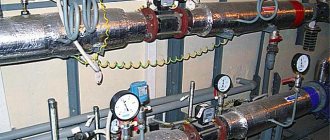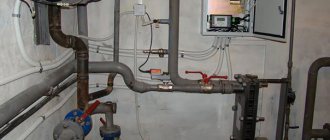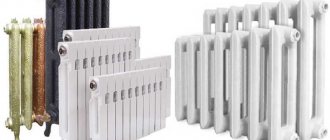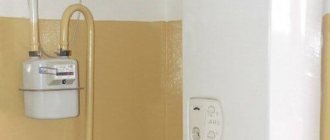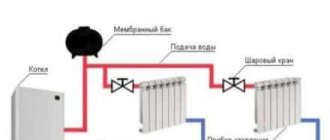Heating is the most expensive utility service. The basis for the calculation of this article in the receipt for payment of rent indicates the tariffs and standards established by the legislation of the Russian Federation. If a common house heat meter is installed in an apartment building, then the payment includes the volume of heat energy consumption.
In the article, we will consider in what cases heat meters are required for heating in an apartment building, how to install the equipment correctly, and what benefits the residents of the house will receive from this.
Legal regulation of the need to install a heat meter
The efficient use and conservation of energy is discussed in Federal Law No. 261-FZ dated November 23, 2009. It also mentions the need to equip apartment buildings with common house heat meters (Part 9, Article 11). Initially, property owners were ordered to install and commission such meters before January 1, 2012.
Further, the deadlines were repeatedly postponed until the Federal Law of July 29, 2017 came into force, which stipulates the obligation to install communal heat meters by January 1, 2022. The only exceptions are the following houses:
- recognized as dilapidated, unsafe and subject to demolition, which is confirmed by relevant documents;
- where it is technically impossible to install a heat meter.
Who should pay for the installation of a communal heat meter?
The Housing Code fixes the issue of maintaining the common property of an apartment building. According to Art. 36 of the Housing Code of the Russian Federation, all of it belongs to the owners of the premises in it on the basis of common shared ownership. The property also includes general building utilities, on which heat meters used to heat the house are installed.
Accordingly, all costs associated with the installation and maintenance of devices are borne by the owners of apartments and other premises in the apartment building. Equipping an apartment building is a legal obligation, but the procedure requires a decision on installation to be made at a general meeting of apartment owners. The initiator of such a meeting can be the management organization or the residents themselves.
What is UTE service on the receipt?
The procedure for installing a heat meter in an apartment building
In new buildings, heat meters are already required to be installed. Otherwise the house will not be put into operation. But for residential multi-apartment buildings that have been built and occupied for a long time, it is necessary to comply with legal requirements in terms of equipping them with the necessary equipment.
First of all, before installing a heating system, you need to make sure that the house has the technical ability to install it on a heating system. Then the procedure will be as follows:
- The decision to install the device must be made at a meeting of premises owners. It is collected on the initiative of the apartment owners themselves or by the management company. It is recommended to discuss the following issues at the meeting:
- installation method - by the management organization or with the involvement of a contractor;
- timing of installation and commissioning;
- the amount of contributions associated with the installation and commissioning of the meter (if residents accumulate contributions for major repairs in an account opened for their home, then they have the right to decide to pay the costs of installation and commissioning of the heating unit at the expense of major repairs);
- financing method - a single payment or installments.
- The meeting can be held in person or in person or in absentia. The decision is considered adopted if consent is received from at least 10% of the total number of votes of the owners of the premises.
- If the meeting was initiated by residents, they must record their decision and send a written statement to their management company with a request to install a heat meter.
- Then an installation project and an estimate for the work are prepared, taking into account the installation location and meter model. The document is issued by the design organization and agreed with the heat supply company.
- After approval, the metering device specified in the estimate is purchased and installed in the heat supply system of the apartment building. There must be a verification badge on the body of the device and in its passport, i.e. the equipment is certified and provides accurate measurements.
- The device is installed and put into operation. Installation takes one business day. Then an inspector from the resource supplying organization is invited to inspect and seal the metering unit. A commissioning act is drawn up and starting from the next month, payment for heat is calculated based on the readings of the heat transfer capacity.
Currently reading: Is it necessary to install a water meter in 2022?
Replacing and installing a meter
For installation, a technical design is drawn up, taking into account the characteristics of the house. The document is approved by the service, then the device is purchased according to the recommendation in the calculation output. For installation, contact a specialized organization. You cannot install the meter yourself.
The meter is replaced in the following cases:
- the end of the operating time prescribed by the manufacturer;
- detection of mechanical or electrical damage that affects the accuracy of the data;
- violation of the control seal;
- if the check shows an excess of the possible error, the information does not correspond to reality;
- missing technical inspection time.
The fee will be calculated not according to actual consumption, but according to the average tariff, if the faulty device is not replaced in time.
Maintenance of a heat meter
Maintaining the meter in working condition is achieved with its regular maintenance. This is a set of preventive measures, including:
- periodic external inspection of the common house heat meter;
- timely elimination of factors that may affect the breakdown and premature wear of the device;
- monitoring equipment operation;
- periodic (at least once a week) readings from the device for subsequent data analysis.
The service life of the ODPU varies from 10 to 14 years. Its verification interval is 4 years.
Periodic checks are necessary in order to promptly identify device failure, as well as the possibility of eliminating it or the need for its complete replacement. If a malfunction is identified and it can be eliminated, the device is dismantled, repaired and reinstalled.
How much does a communal heat meter cost?
The cost of installing a heating system for owners of premises in an apartment building consists of the following items:
- the cost of the meter itself and related materials;
- costs for the development of design documentation and documents containing the technical conditions of the heat supply system, without which the installation cannot be carried out;
- cost of installation work, including commissioning activities.
Prices for meters depend on the manufacturer and type of device:
- ultrasonic - the most expensive meter in the price range from 15 to 50 thousand rubles;
- electromagnetic costs 15-17 thousand rubles;
- a vortex will cost an average of 15 thousand rubles;
- tachometer is the most inexpensive option with a service life of no more than 4 years, its price is from 6 to 10 thousand rubles.
As a result, the total amount of all measures can range from 150 to 300 thousand rubles, which residents can repay at a time, in installments or using funds collected for major repairs.
Varieties
Different electrical appliances for an apartment building may differ in operating principles, maintenance and installation. The best option is to entrust the choice of heat meter to an organization that specializes in installing such equipment.
Professionals will assess the current condition of the house and, taking into account the results obtained, will offer a certain type of heat meter that is optimal for installation. Depending on the principle of operation, there are 4 main types of communal heat meters:
- Tachometric.
- Vortex.
- Electromagnetic.
- Ultrasonic.
Tachometer meters are simple designs that have a thermal calculator, as well as a mechanical vane or rotary water meter. These devices are inexpensive and operate on a battery that is designed for 5 years of operation. When installing the meter, it is necessary to use a magnetic-mechanical filter.
Vortex heat energy meters operate on the principle that turbulence occurs after passing obstacles that are in the path of the coolant. Devices of this type are suitable for installation on communication pipelines with any wiring diagram. The main condition is that there must be a section with straight pipes before and after the device.
ATTENTION! In an apartment building, professionals recommend installing a vortex heat meter, since large parts and impurities in the liquid do not distort the readings of the device.
Electromagnetic heat meters operate on a different principle. The operation of the device is based on the use of an electromagnetic field. Due to changes in coolant volumes at the input/output, a small current arises. The installation of such equipment must be carried out by professionals, since there are strict rules for the installation of electromagnetic devices.
An ultrasonic heating meter is more sensitive modern equipment. It operates on the principle of ultrasound passing through antifreeze or coolant. Ultrasonic heat meters are recommended for installation in new houses with a clean water flow. Heat meters of this type are sensitive to excess parts present in the liquid.
How to avoid paying for the installation of a communal meter?
Installing a meter can be free for residents if the management company or the HOA that manages the house enters into an agreement with an energy service company (ESC). Then the metering device will be installed at her expense and leased to the owners of the apartment building for a time.
In fact, such a mechanism involves covering the costs of the energy service company for installing the meter (with a planned profit) gradually, followed by transferring it to the ownership of the residents. The process is as follows:
- The management company or homeowners association enter into an agreement with the power supply company.
- ESC installs a common house heat meter from its own funds.
- Residents of the house pay for heat according to the meter and transfer 80% of the resulting savings to pay off the cost of its installation;
- After full reimbursement of ESC costs, the metering device is transferred to the residents' ownership.
For example, before the installation of ODPU heat, the owners of the building premises paid 620 thousand rubles. After installation, costs were reduced by 80 thousand rubles per month, which we will consider savings. Of this amount, 64 thousand rubles. (80% of the savings) residents will be able to contribute monthly to cover the costs associated with installing the meter.
The energy service company invested 284 thousand rubles in equipping the house with a metering device. rubles plus, under the terms of the contract, the expected profit will be 86 thousand rubles. Accordingly, after 6 months, a full calculation will be made and the meter will be transferred to the residents of the apartment building.
Who should install
The installation of the heat meter is carried out by qualified specialists hired by the housing and communal services service of a multi-storey building. Residents of an apartment building pay for the installation of electrical equipment. Since a common building heat meter records the amount of heat entering a high-rise building, it is worth considering the benefits of such a device.
ATTENTION! Residents do not have the right to install a communal heat meter on their own; to do this, they must use the services of a special service.
The need to install a heat meter is determined at a general meeting of residents of an apartment building. Installation of electrical equipment of this type is carried out after a written application submitted by representatives of the management company to the relevant organization. In order to calculate the heat energy consumed, the electricity meter data is divided by the total area of the room. Of course, there are certain benefits from installing heat meters.
Without it, payment for heat consumption will be carried out at inflated coefficients. Unfortunately, the equipment does not allow you to regulate the heat supply to the house, which is a significant disadvantage of the device.

